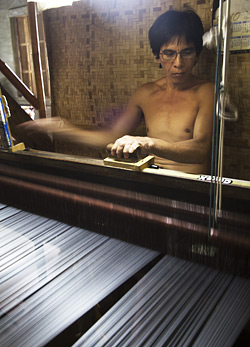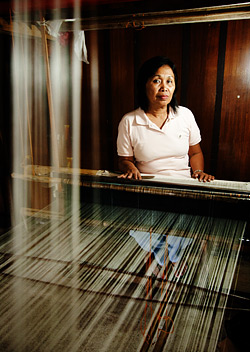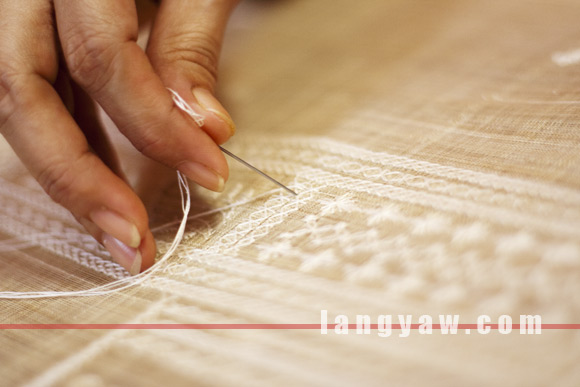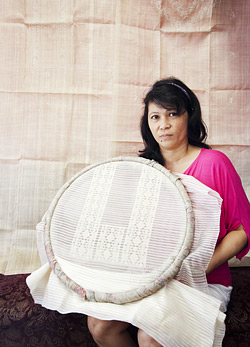
There’s more to the western part of Panay than Boracay. In fact, there are many interesting places in the provinces of Aklan, Antique and western Iloilo that just amazes without driving all the way to Caticlan. Ruins, churches, food and rowdy festivals are there waiting.
Aklan pina handloom weaving
Aklan is proud of its pina fiber (pina = pineapple). So much so that products derived from processing these fibers into fabrics is one, if not its top export industry: barong tagalog and baro’t saya, the Philippines national dress for men and women, worn by presidents and celebrities; bags and mats; shawls and other Filipiniana items that are prized by tourists and designers here and abroad.
The Aklan pina handloom weaving is a whole cottage industry that has given hope to idle wives and retirees and poor families that derive their income from preparing, weaving, making products from pina fibers. It’s even safe to say that in many towns in the province, there’s a community of weavers and craftsmen busily meeting an order.


Pina fiber as well as abaca weaving has always been a tradition in Aklan even way back during the Spanish colonial era. In the 1970s, demand for products from pina fibers was realized and from that time, when Aklan started its own industry by having government agencies train Aklanons, to the present, it has fueled the local economy.
Pina weaving in Lezo town

I was brought to the town of Lezo by Ms. Thamar Restar of Syndee’s Arts and Designs, a local producer and subcontractor for exporters who I contacted to acquaint me with the industry.
Ms. Restar herself, 54, retired, attests to the great help that pina fiber has helped educate her children. She started in 1992 with three looms and weavers. In 2011, she already had 100 knotters, 10 weavers and 3 embroiderers who are employed in her place in Lezo. She also has 20 weavers who work at home.
The fiber comes from mature leaves of the pineapple of the red Spanish variety which is preferred as it lasts compared with the others. With a piece of broken china, the leaf is scraped of its surface until the fibers are left. These are then washed, cleaned and washed again to remove plant material. After which, are then dried.

From fiber to fabric

Dried fibers are now spooled and eventually woven on looms to come up with the prized pina fabrics. Depending on the width, length, density as well as the kind of fabric, some are pure pina fibers while others are mixed, weaving can be as short as 1 month to as long as 3 months.
Finished fabrics are the base for different products. Designers employ embroiders, usually working at home like Leonila de Ramos, right, to make their barong, gowns and casual dress designs. Leonila, a mother of three started doing embroidery work 16 years ago and has supported her family’s household expenses and childrens education.
Pina, Aklan’s well loved fiber. From its traditional use centuries ago to the present day’s design and export product has indeed come a long way.
My great thanx to Ms. Thamar Restar who helped in acquanting me with the pina fiber industry in Kalibo. Her firm also supplies wedding related products derived from the fiber.
Aklan pina handloom weaving has been been added to the Representative List of the Intangible Cultural Heritage of Humanity by UNESCO, December 6, 2023.
Syndee’s Arts and Designs
Ibao, Lezo, Aklan
St. Micheal St. Kalibo, Aklan
+639305065185*
lukes.cafe2013@gmail.com
*updated contact number & email, 22 April 2019



